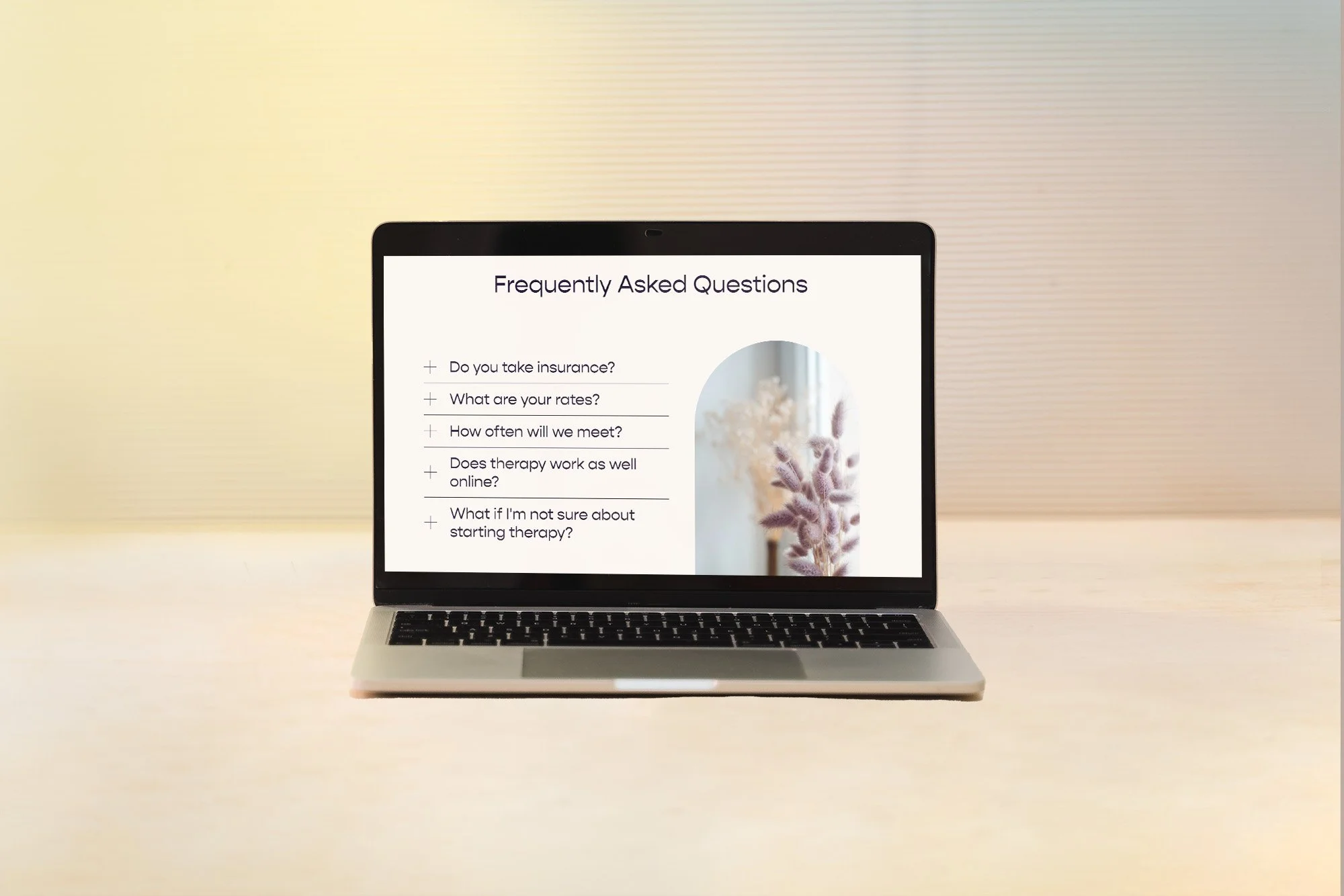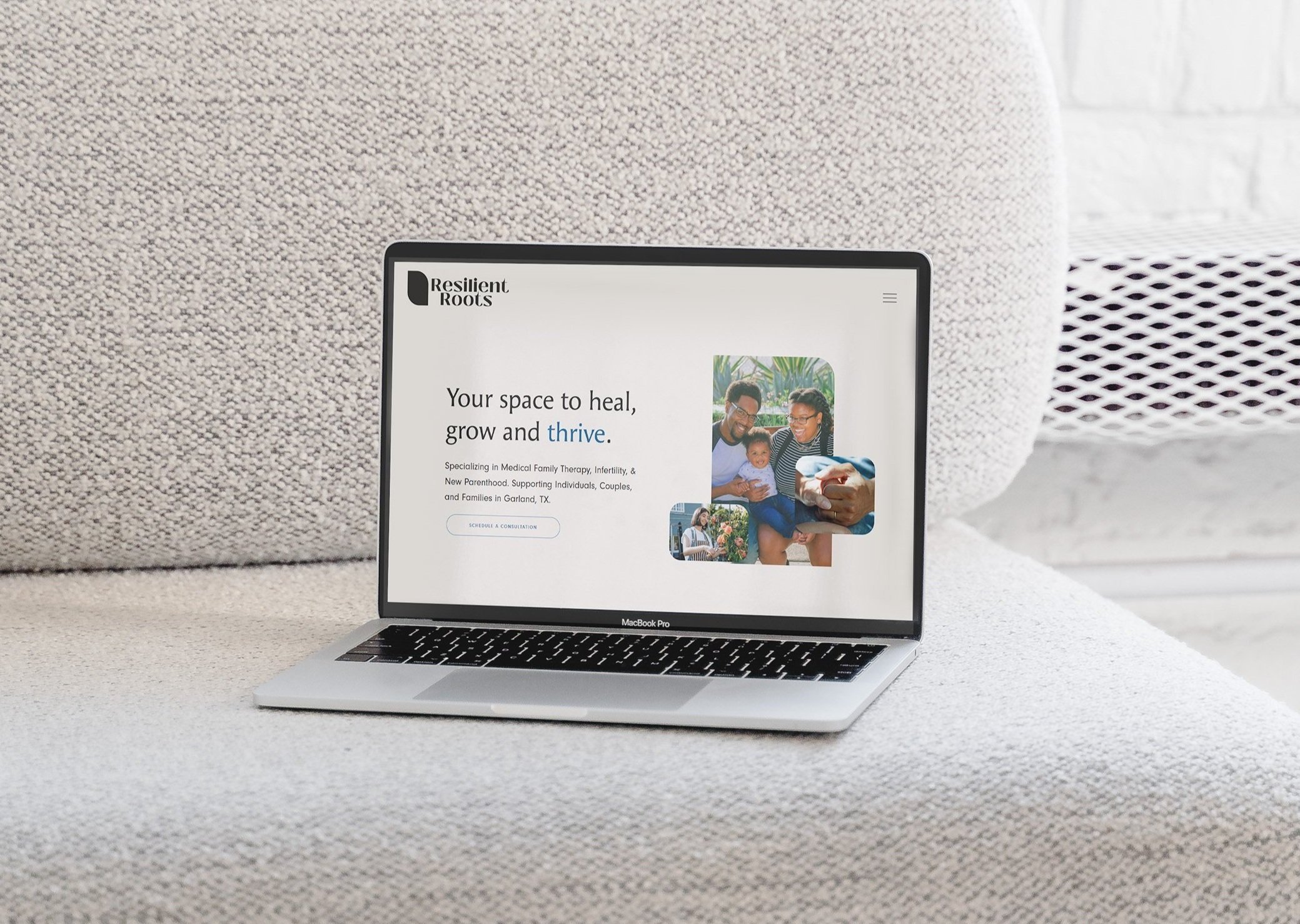FAQ Pages for Therapists: An Easy Win for SEO and Your Clients
Picture this: Someone's lying awake in the middle of the night, anxious and overwhelmed, and they ask ChatGPT, "Is there a therapist near me who specializes in anxiety and takes Blue Cross Blue Shield?"
Did you know that your practice could show up in that answer? Yes, really.
AI search is quickly becoming the main way people search online and it's changing how people find therapists. The good news? You don't need to become a tech expert to show up. One of the simplest, most practical ways you can improve your visibility is something you might already have (or have been meaning to create): an FAQ page!
Why FAQs Matter for AI Search
AI search engines like ChatGPT, Perplexity, and Google's AI Overview are pulling information directly from websites to answer people's questions. And they absolutely love an FAQ format because it's literally a question paired with an answer, and that's exactly what they're looking for.
This is part of what's called AIO (AI Optimization). I know, another new acronym to learn (trust me, I feel the same way 🤪). But, here’s the good news:
It's not replacing traditional SEO,
And it’s adding a new opportunity for people find you online.
🌻 BTW, if you want a deeper dive into the full picture of SEO and AI search for therapists, check out Does SEO Still Matter in the Age of AI? What Therapists Need to Know.
Two Ways to Use FAQs on Your Website
You have options here, and honestly, the best approach is to use both:
1. A Standalone FAQ Page
This is a dedicated page on your site where you answer common questions all in one place. It's comprehensive, easy to find, and gives AI search engines a concentrated source of information about your practice.
For a great example of this in action, check out my client Lisa Listerman's FAQ page or my FAQ page. It's organized, scannable, and answers real questions potential clients actually have.
2. Adding FAQs Within Your Other Pages
Sprinkle 2-3 relevant FAQs into other pages on your site, such as your About page, your individual service pages, your contact page. These reinforce key information right where people are already looking and give you another chance to address concerns that might be holding someone back from reaching out.
For example, on your trauma therapy page, you might include FAQs like "How is trauma therapy different from regular therapy?" or "Do I have to talk about the traumatic event in detail?"
What to Include on Your FAQ Page
The best FAQ pages serve two audiences: the actual humans visiting your site and the AI search engines looking for answers to give those humans. Here's how to balance both:
Questions Real People Are Asking
These are the questions you get in consultation calls, the concerns people express in their first session, the logistics they email about:
"Do you take insurance?" / "How much does therapy cost?"
"Where are you located? Is there parking?"
"Do you offer telehealth?"
"What happens in a first session?"
"How do I know if you're the right therapist for me?"
"Do you treat [specific issue like OCD, eating disorders, postpartum anxiety]?"
Questions That Help with Search
These are the questions people are typing into search bars (or asking AI):
"What is [your specialty] therapy?" (Like "What is EMDR?" or "What is Acceptance and Commitment Therapy?")
"How long does therapy usually take?"
"What's the difference between a therapist and a psychiatrist?"
Location-specific: "Do you see clients in [your city]?" or "Are you licensed in [your state]?"
The sweet spot is questions that do both! Help real people and help you show up in search results.
How to Organize Your FAQ Page
A well-organized FAQ page is easy to scan, easy to navigate, and doesn't overwhelm someone who's already anxious about reaching out for therapy.
Group questions by category. Use clear headers like:
Getting Started
Insurance & Costs
The Therapy Process
About My Approach
Logistics & Scheduling
Put the most common questions first. If 90% of your consultation calls start with "Do you take my insurance?", that question should be near the top.
Use clear, natural language for your questions. Write them the way people actually ask—not the way you'd phrase them in a clinical paper. "How much does therapy cost?" beats "What are your fee structures?"
Keep answers concise but complete. A paragraph or two is usually enough. You can always link to a more detailed page if needed (like linking to your full Insurance page from your FAQ answer about insurance).
Include internal links where relevant. If someone asks "What is your approach to trauma therapy?", link to your trauma therapy service page. This helps both readers and search engines understand how your content connects.
The Technical Bit (But You Can Skip This Part if You Are Not Techy!)
If you're comfortable with a bit of website backend work, here are a couple of easy technical touches that can help (but seriously, don’t stress about these if you feel overwhelmed already!).
Use proper heading structure. Your main FAQ page title should be an H1. Category headers should be H2s. Individual questions can be H3s (or even H2s if you're not using category headers).
Make sure it's easy to scan. Use enough white space. Break up text. Make it visually clear where one question ends and another begins.
Consider adding FAQ schema markup code block. This is code that tells search engines "Hey, this is an FAQ!" It can help your FAQs show up in search results in a special format. If that sounds too technical, don't stress–it's a nice-to-have, not a must-have. (This is something you can ask your web developer about, ask your website building platform (e.g. Squarespace, Wix, etc.) about, or ask an AI tool (like ChatGPT),
Want Help Actually Writing These FAQs? Meet Bloomy! 🌻
Here's the thing: knowing you need an FAQ page and actually sitting down to write clear, helpful, non-jargony answers are two different challenges.
That's why I created Bloomy: The Therapist Writing Pal a custom GPT trained specifically on how to write therapy website copy that connects with clients. Bloomy can help you draft FAQ answers that sound like you, address your clients' real concerns, and of course, help with that AI search optimization too.
Bloomy launches the first week of December, and I'm building a waitlist now. Join the waitlist here to be the first to know when she’s ready! 🌻
TLDR
Your FAQ page serves two purposes: it helps anxious/distressed clients find the answers they need, and it helps AI search engines find you when people are asking questions.
Start with 8-10 solid questions. You can always add more over time.
And remember: This is one piece of your visibility puzzle, not the whole thing. It works best when it's part of a bigger strategy that includes thoughtful website copy, helpful blog content, and all the other ways you show up online.
But if you've been putting off creating an FAQ page because it felt like just another task on your endless to-do list? This is your sign. ✨













